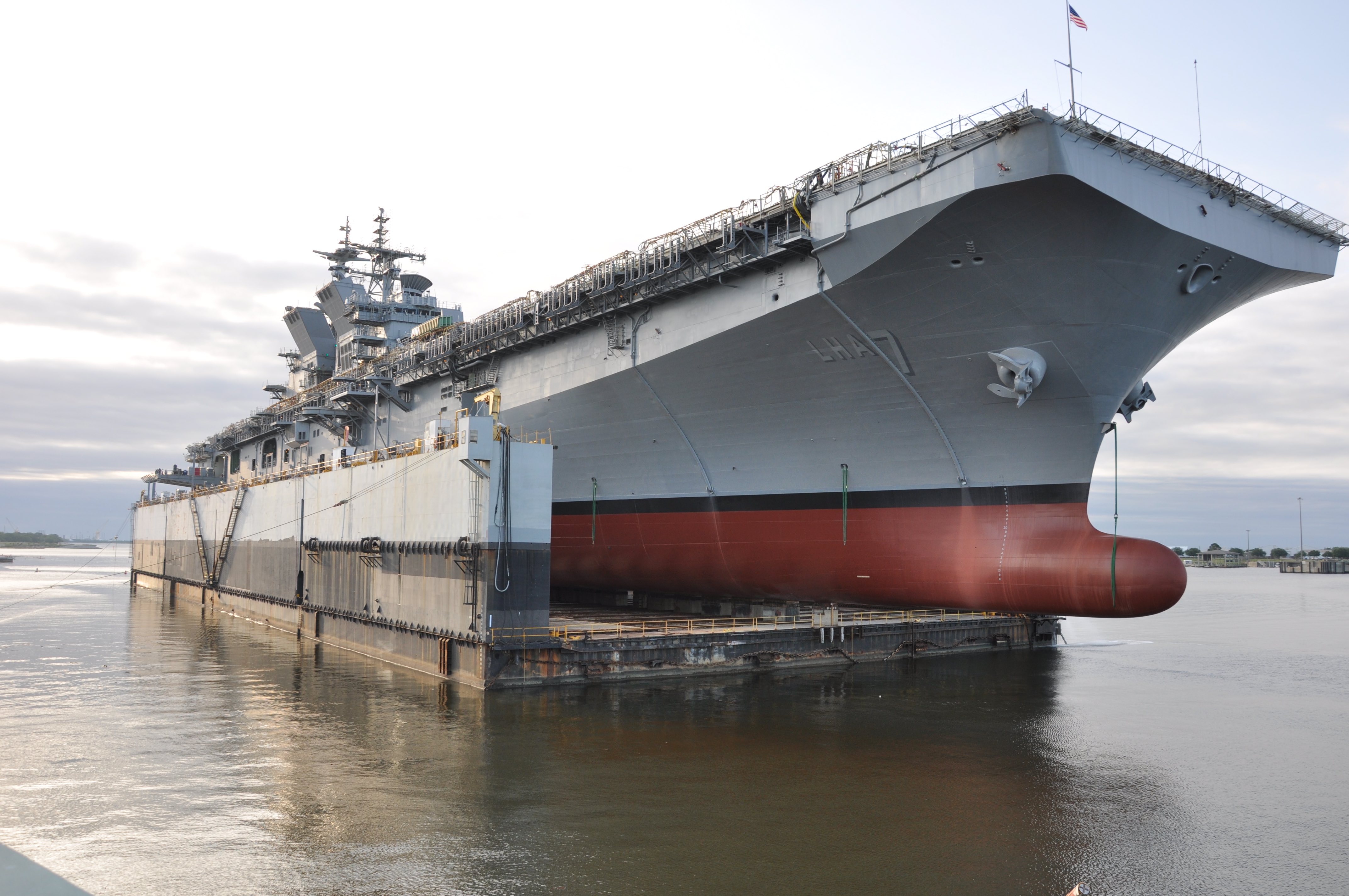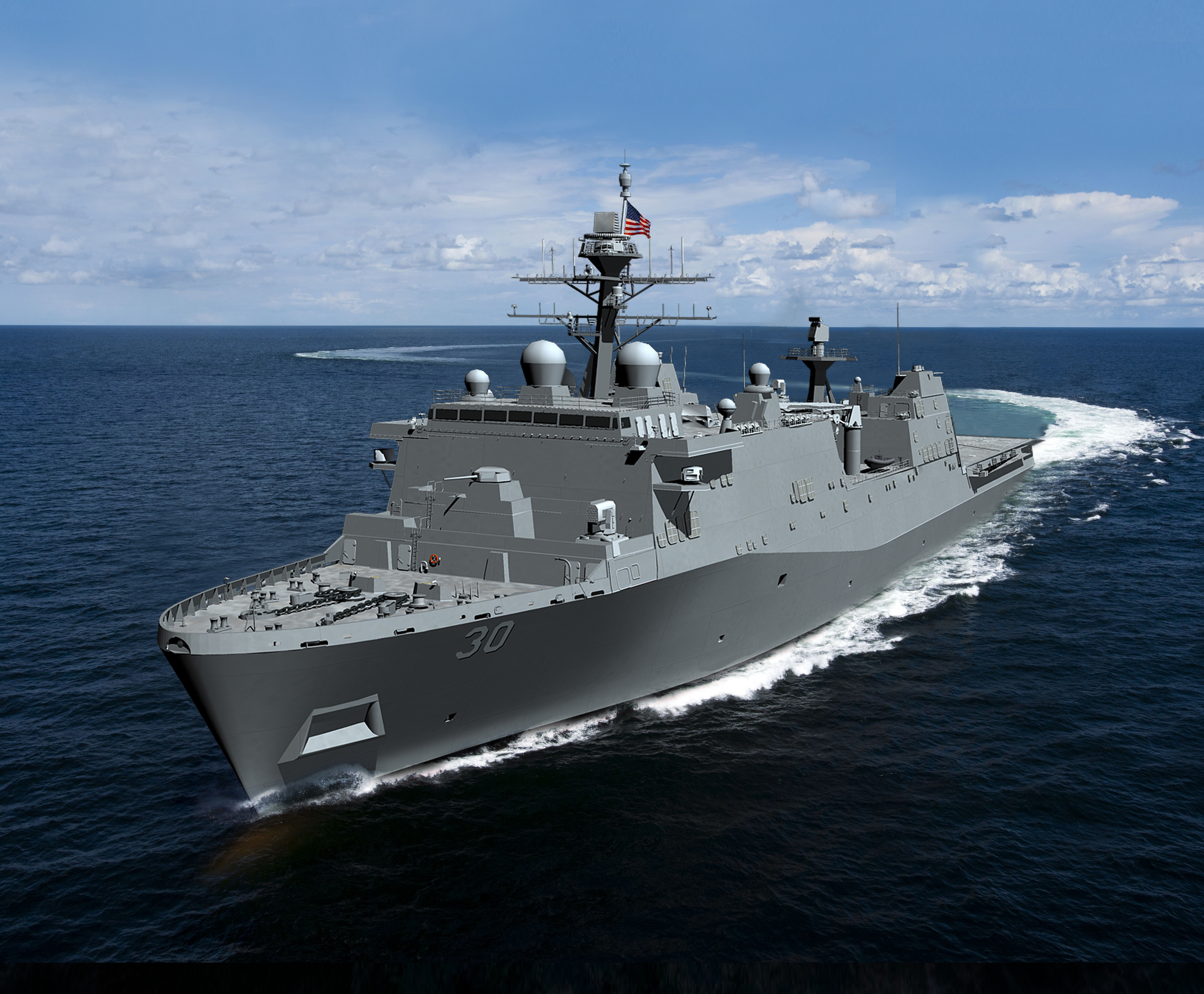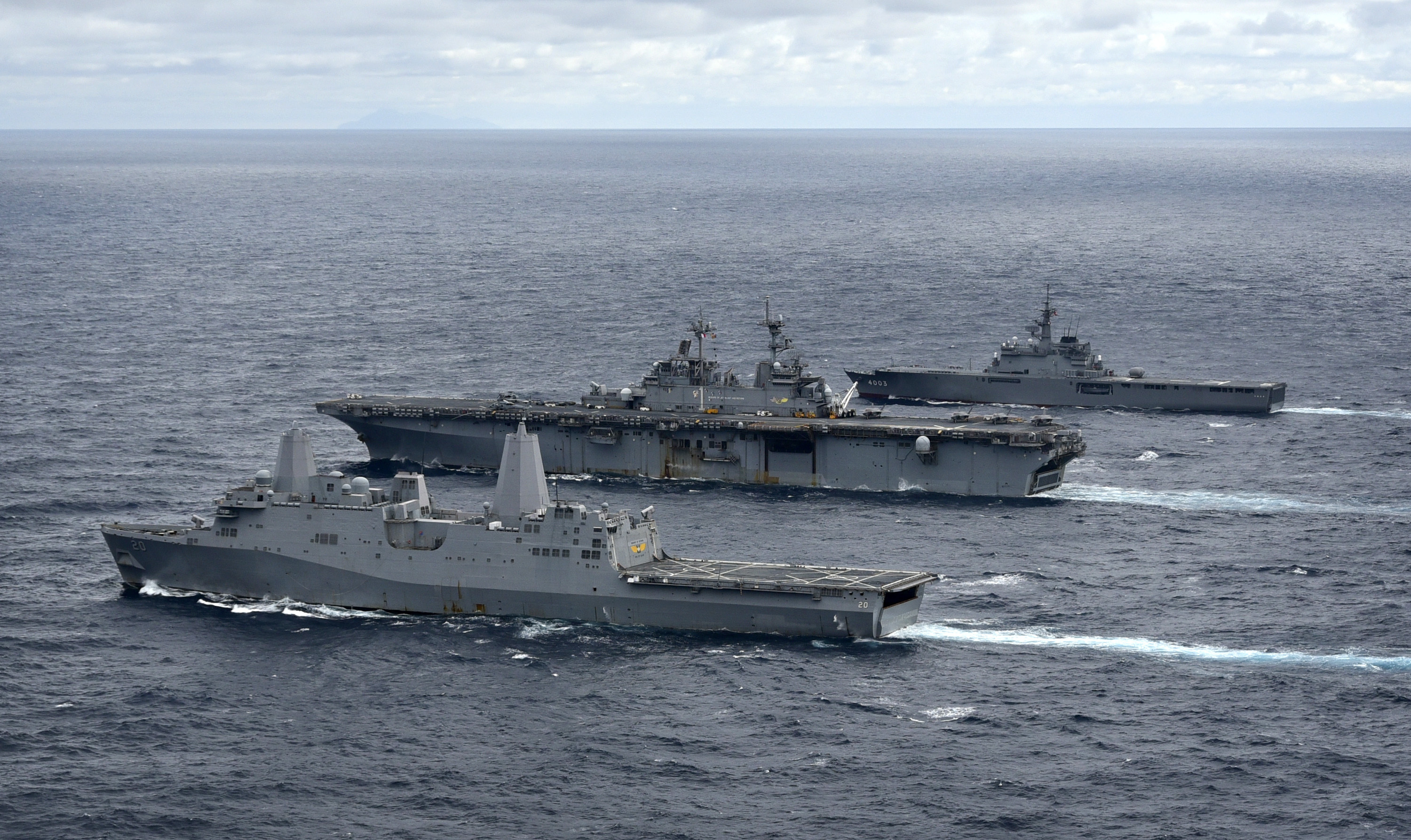
CAPITOL HILL – A Mississippi senator is pushing to get the Navy authority to begin advance procurement and early construction activities on two amphibious ships, despite the Navy’s budget request that show those two ships being purchased in full later than the shipbuilder might like.
This current year’s budget spends about $350 million for America-class amphibious assault ship LHA-9 and amphibious transport dock LPD-31, the second Flight II hull in the San Antonio class of LPDs. However, neither ship would receive funding in Fiscal Year 2020, under the Navy’s request, since the service chose to delay LPD-31 a year to instead buy an additional submarine.
Without funding in FY 2020, Sen. Roger Wicker (R-Miss.) said Wednesday at a Senate Armed Services seapower subcommittee hearing, that $350 million must sit around unused, not helping suppliers keep their production lines hot.
“This move has the potential to disrupt the amphibious warship industrial base, as there is a long lead time requirement for parts and materials, as we all know,” Wicker said of the gap in funding for the LPD and LHA classes.
“Instead of deferring procurement to 2021 and 2024 (for LPD-31 and LHA-9, respectively), could the Navy apply incremental funding to the LPD and LHA in 2020? Is incremental funding more advantageous than deferring procurement? If Congress approves incremental funding in FY 20 [National Defense Authorization Act] for the LHA and LPD, would it allow the Navy to accelerate how it spends the $350 million that was appropriated in FY 19?”
James Geurts, the Navy’s acquisition chief, said he could start spending that $350 million right away in FY 2020 if incremental funding authority were granted.
Geurts explained to reporters after the hearing, “the challenge for both is, without the incremental funding authority, I can’t start working on those. I can’t start work on those using the funds that were authorized and appropriated in ‘19 until I have a full budget, and so the idea would be with incremental funding authority we could start buying some of the long lead” materials for those ships to try to minimize the impact on suppliers and the shipyard.

LPD-31 was pushed back from 2020 to 2021 specifically to fund a third Virginia-class attack submarine, which is considered a higher warfighter priority, the chief of naval operations told reporters after the budget request was released. The first LPD Flight II hull, LPD-30, was paid for in FY 2018, and the Navy awarded Ingalls Shipbuilding a $1.47-billion contract on Tuesday for the construction of that ship.
Ingalls president Brian Cuccias said in a statement that LPD Flight II “builds upon the significant investment that has been made in this platform to improve the capability and flexibility of our deployed Navy-Marine Corps team. LPD 30 will leverage a hot production line and further benefit from the investments we continue to make in our shipbuilders and facilities.”
Buying LPD-31 in 2021, though, risks throwing off the production line, due to the length of time between working on LPD-30 and 31. Geurts said in August that “it would appear to me that the serial production opportunities for the continuous production of that LPD-17 would be right for either a multiyear or a block buy,” but that statement occurred when the Navy still intended on buying the second LPD in 2020.
Geurts told Wicker during the Wednesday hearing that LHA-9 was kept in its 2024 slot – even though industry has protested that move – for budgetary reasons as well, but Geurts added he would like to see it bumped up to 2022 if possible.

“We’re concerned with it in ’24; it was there from an affordability standpoint. We’re going to look hard in the ‘21 budget at potentially moving that to the left as funding allows, because I’m also concerned with the seven-year break in that ship and I do not want to lose the excellent workforce we have cranking out LHAs right now,” Geurts said, referring to the seven-year gap between buying LHA-8, the future Bougainville, and buying LHA-9.
“So it’s in the budget right now in ’24; that is something we’re all motivated to [accelerate], both from a workforce standpoint as well as its contention with [the Columbia-class ballistic missile submarine program] as it starts ramping up in ‘24.”
The first Columbia-class SSBN would be bought in 2021, with the second in 2024 and then annual serial production beginning in 2026. As multiple SSBNs are being paid for and built in any given budget year, the strain on the supply base and the pressure on shipbuilding funds for other programs are expected to grow.
Geurts told reporters after the hearing that a five-year gap between LHAs would be “more appropriate for that class of ship,” and that a 2022 procurement would also put LHA-9 ahead of the second Columbia sub’s procurement, making the funding a little easier to manage.
The Navy currently has a requirement for 38 amphibious ships: 12 amphibious assault ships, including the America-class LHAs and the Wasp-class LHDs, and then 13 each of the LPD Flight I and either the Whidbey Island-class dock landing ship (LSD-41/49) or the LPD Flight II that replaces it.
The Navy has just 32 amphibs today, but support for amphibious ships in the budget has fallen due to a more dire need for submarines to support the Navy’s plans to operate in a contested environment. Navy officials have said an ongoing force structure assessment is likely to call for a larger fleet than the 2016 FSA’s 355-ship goal, but it’s unclear what this FSA will say specifically about the size of the amphibious fleet.

Lt. Gen. David Berger, the deputy commandant of the Marine Corps for combat development and integration – who on Tuesday evening was nominated to serve as the next commandant of the Marine Corps – said during the SASC hearing that the Marine Corps stood firmly by the requirement to have at least 38 amphibs, and he noted that the readiness of those amphibs was also a concern for his service.
In addition to the sheer quantity of the amphib ships, Berger told lawmakers that the capability on those ships matters too. During a Tuesday hearing at the House Armed Services seapower and projection forces subcommittee, Berger said the ships needed to boost their offensive and defensive capabilities to support the Navy’s distributed maritime operations concept and the Marines’ expeditionary advance base operations concept, both of which call for smaller groups of dispersed forces operating across a large theater.
“Heretofore, the amphibious ships were largely protected by surrounding ships around them. In a distributed manner, you want as much lethality and survivability on every craft as you can get,” Berger told the congressmen, because there might not be a cruiser or destroyer nearby to provide escort protection.
“The ability to put longer-range – if not organic, then at least containerized – weapon systems on an amphib ship in an offensive manner just complements the rest of the picture, because it has sea control and sea denial” capabilities that the amphibs could contribute to the naval fight, in addition to just projecting Marines and their gear ashore.





